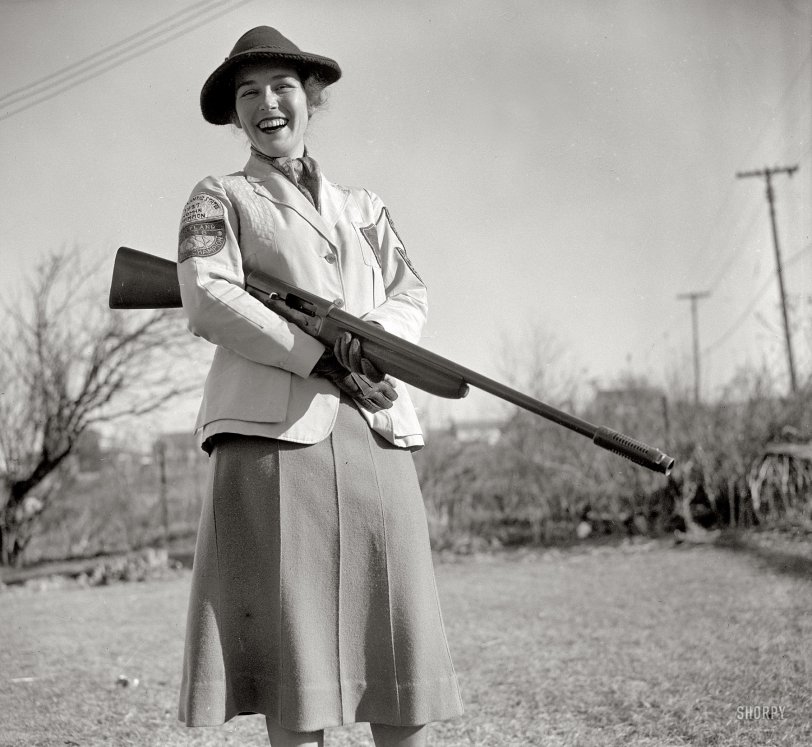I still have not been able to wrap my mind around this terrible event, and therefore haven't known what to say. To be honest, I'm still not sure what to say - and then it dawned on me... why not see what you all have to say? So to anyone out there who follows this little blog of mine, I ask you:
How have these terrible events affected your view on guns?
How has this affected you personally?
Need a place to just get out your thoughts without fear of being judged? Do it here. I will mod this so it doesn't become a debate, just a place to discuss.

- The women's rifle team, Abigail Adams House, 1928.
The largely ignored women pioneers of the early 20th century studied such subjects as pomology, floriculture, entomology, and dairy. They boarded with local residents or lived atop Draper Hall and were instructed to “wear skirts or long coats over bloomers or riding breeches when in trolleys or in town.” They were subject to teasing, strict curfews, and were unwelcome in many campus clubs. Still, they excelled academically. The first two women grads were both Phi Beta Kappa, and one early female student won $50 and a ton of fertilizer for her agricultural smarts. Women formed their own groups, such as a choral society and the first campus sorority, Delta Phi Gamma.
Kenyon Butterfield, who became president of MAC in 1906, was the first campus leader to give the women students serious consideration. He hired Edna Skinner to advance the cause of women’s education. From 1919 to 1946, she was the college’s chief voice for women, and dean of the new school of home economics. She oversaw the 1920 opening of the first dorm for women, Abigail Adams House (known as “The Abbey”), and steadfastly pressed for increased enrollment, wider opportunities, and better facilities for women.
Helen Curtis Cole succeeded Skinner as dean of women and battled educational inequities for 28 years. She fought against higher admission standards applied to women and pushed to allow women to become engineering, business, pre-med, and pre-vet majors.
The years of the women’s liberation movement saw the first coed dorm on campus (Greenough in 1970) and the birth of three vital and enduring UMass Amherst entities: the Everywoman’s Center, the Women’s Studies program, and the Status of Women Council.
After a century of growth, women are no longer hidden in the UMass Amherst garden: The entering class of 2013 is 52 percent female, and there are about 450 full-time female instructional faculty (more than 200 with tenure). However, “There are still a lot of things to do,” says Kathleen Davis, associate professor in the School of Education and co-chair of the Status of Women Council. Today’s council looks to improve recruitment of women faculty and staff, promotion and salaries, the granting of tenure, the establishment of daycare centers, sexual harassment policy, the admission of undergraduate and graduate women students, the granting of financial aid, and more.
Says Davis, “We are alive and well and still fighting for gender equity.”







 Ummmmm NOT.
Ummmmm NOT.










 This was considered the "wrong" way to hold a rifle.
This was considered the "wrong" way to hold a rifle.




 << NO!!! (well, yes if you're him because he clearly intends to fire)
<< NO!!! (well, yes if you're him because he clearly intends to fire)




